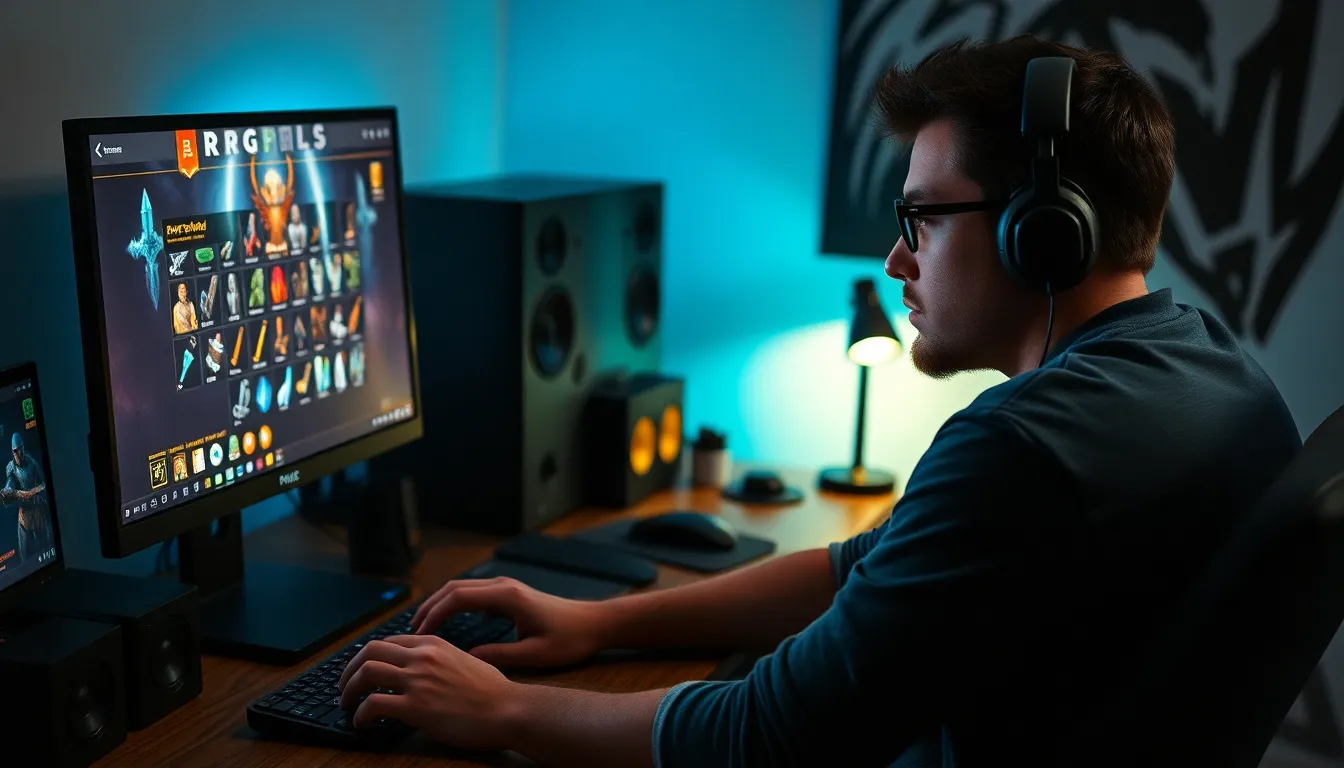In the fantastical realms of RPGs, players often find themselves battling more than just dragons and goblins. They face the ultimate dilemma: inventory weight. Picture this: you’re on a quest, sword in hand, when suddenly your character can barely move because they’ve hoarded enough loot to fill a dragon’s den. It’s a classic case of “more is less,” and it’s time to tackle this weighty issue.
Table of Contents
ToggleUnderstanding RPG Inventory Weight
Inventory weight plays a critical role in gameplay dynamics for RPG players. Managing this weight effectively enhances the overall gaming experience.
Importance of Inventory Management
Inventory management affects character performance significantly. Players experience a balance between carrying essential items and avoiding overload. Improved management leads to strategic decision-making, enabling characters to remain agile during quests. Characters often face choices about which items to keep based on their weight. Prioritization of gear is vital, as it can determine the outcome of battles and exploration opportunities. By focusing on necessities, players improve their efficiency in both combat and exploration environments.
Common Weight Systems in RPGs
Different RPGs implement unique weight systems to challenge players. Some games adopt a direct weight limit, making each item contribute to a total that restricts mobility. Other systems utilize a more nuanced approach, allowing for a percentage of weight relative to character strength, impacting carrying capacity. Certain titles feature encumbrance ratings that categorize items as light, medium, or heavy, affecting movement speed and fatigue levels. Variations in weight systems encourage players to strategize differently, fostering diverse gameplay experiences. Understanding these systems helps players make informed decisions about their inventory management.
Impacts of Inventory Weight on Gameplay

Inventory weight significantly affects how characters perform in RPGs. Managing this weight dictates mobility and strategy, shaping the overall experience.
Effects on Character Mobility
Character mobility relies heavily on inventory weight. Carrying excessive loot leads to slower movement, decreasing effectiveness in combat or exploration. When encumbered, characters struggle with evading attacks or escaping danger. Players often face frustration as they realize their character can’t sprint or dodge due to heavy loads. A well-balanced inventory enables swift movement, enhancing gameplay fluidity. Characters that prioritize mobility can navigate environments more efficiently, making critical decisions in moments of tension. Thus, managing weight proves essential for maintaining agility during quests and encounters.
Inventory Weight and Strategy
Weight influences strategy during gameplay. Players must consider equipment selection carefully, weighing utility against weight limits. Prioritizing essential items ensures characters remain equipped for various challenges. A smart inventory strategy includes knowledge of each item’s weight and effects on performance. Some players opt to explore locations that allow for loot selling, lightening their load for improved mobility. Also, a focus on inventory management encourages strategic choices in combat scenarios, as players must adjust tactics based on their carrying capacity. Ultimately, effective inventory weight management fosters deeper engagement and varied gameplay outcomes.
Balancing Inventory Weight in Game Design
Balancing inventory weight plays a pivotal role in game design. Developers must create systems that allow players to make meaningful choices about what to carry.
Player Choices and Consequences
Player decisions directly impact gameplay. Choosing to carry heavier items often leads to slower movement and limited actions during encounters. Characters unable to sprint can fall prey to enemies. Conversely, prioritizing lighter gear enhances mobility, enabling quick escapes and tactical maneuvers. Thus, the balance between offense and defense hinges on inventory management. A well-considered approach to item selection encourages players to strategize, weighing each item’s benefits against its weight.
Examples from Popular RPGs
Popular RPGs illustrate effective inventory management systems. In “The Elder Scrolls V: Skyrim,” a weight limit forces players to decide between carrying multiple potions or powerful weapons. This choice enhances immersion, as players feel the urgency of resource management. “Dark Souls” incorporates a weight system affecting stamina and roll speed, enforcing strategic item selection during combat. Similarly, “Fallout” involves carrying capacities tied to character attributes, pushing players to optimize their inventories for survival. Each example showcases the essential role of inventory weight in shaping gameplay experiences.
Future Trends in RPG Inventory Weight Mechanics
The evolution of RPG inventory weight mechanics continues to shape gameplay experiences. Innovations in design promise to enhance player engagement, streamline gameplay, and provide intuitive inventory management.
Innovations in Game Design
Developers are exploring dynamic weight systems that adapt based on in-game actions. Certain RPGs incorporate weight penalties that change with player stats, creating a more immersive experience. Implementing visual cues can indicate the burdens characters carry, enabling players to strategize effectively during combat. Some games allow for temporary weight reductions through abilities, creating interesting tactical opportunities. Utilizing artificial intelligence, developers can introduce adaptive inventory management suggestions, guiding players in making optimal decisions. These advancements aim to simplify inventory management while maintaining the challenge associated with resource gathering and usage.
Community Feedback and Preferences
Community input significantly influences inventory weight mechanics in RPGs. Players often express a desire for systems that promote realism without sacrificing fun. Voices in the gaming community advocate for customizable inventory limits, ensuring personal gameplay experiences align with individual strategies. Developers frequently gather feedback through forums and surveys, adjusting weight systems based on player preferences. Balancing simplicity and depth remains essential; many players favor intuitive interfaces that avoid overwhelming them with complex mechanics. As developers respond to these trends, the impact of community-driven changes will shape the future of RPG inventory weight management.
Managing inventory weight is a crucial aspect of RPG gameplay that can significantly influence a player’s experience. By balancing what to carry, players can enhance their character’s agility and effectiveness in various situations. This strategic decision-making not only impacts combat performance but also enriches exploration and engagement with the game’s world.
As developers continue to innovate in inventory management systems, players can expect more intuitive and dynamic mechanics that cater to their preferences. The evolving landscape of RPGs promises to keep inventory weight a relevant and exciting challenge, ensuring that players remain invested in their adventures. Embracing these changes will lead to a more immersive and enjoyable gaming experience.








